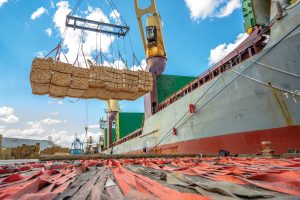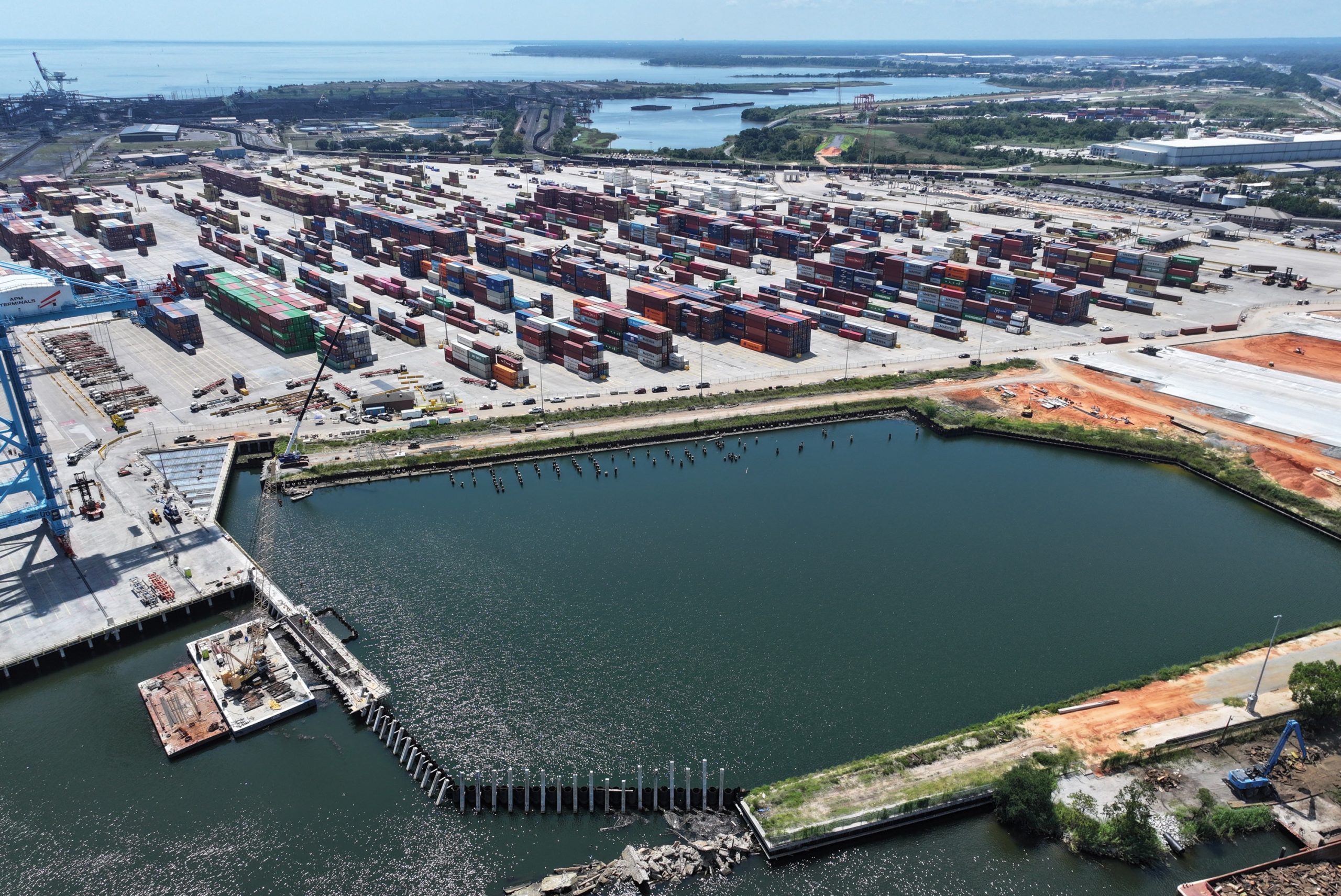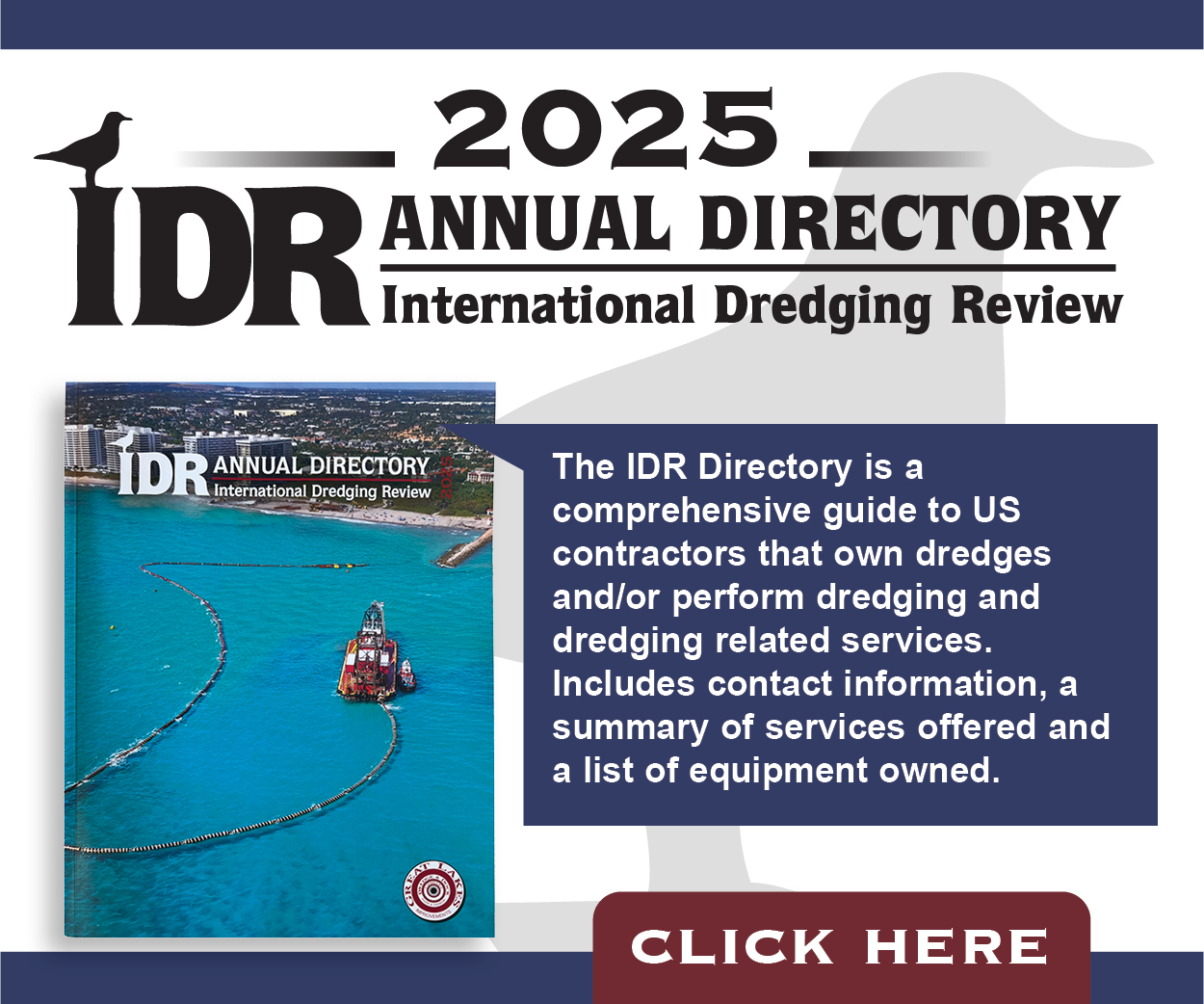At the Port of Mobile, the Mobile Harbor expansion project isn’t just an engineering milestone. It’s the centerpiece of a capital investment strategy designed to create transportation efficiencies, widen trade lanes for shippers and manufacturers and position Alabama’s only seaport as a growth springboard for the entire state.
Interim Director and CEO Doug Otto frames it plainly. “The day after we get the 50-foot channel, the next outbound coal ship will load to 50 feet,” he said. “That’s immediate, measurable efficiency for our customers—and for us.”
Otto’s path to the port helps explain the precision of Mobile’s buildout. A Mobilian by birth, he formerly served as chief of the engineering division for the U.S. Army Corps of Engineers’ Mobile District, overseeing military design and civil works across rivers, harbors and dredging. When the port called, the transition was natural.
“A lot of what the port does aligns with the Corps from an engineering, design, construction and environmental standpoint,” Otto said. “It’s been a great fit.”
That background was pivotal during the deepening program’s formative years. As engineer-in-chief at the Mobile District, Otto worked on the ship channel design and helped steer the environmental impact statement through years of review. Construction launched in 2020, aided by federal support that he credited to Alabama’s congressional leadership. The cost share on the channel—75 percent federal, 25 percent state—also represents a strategic alignment between Washington and Alabama.
“The state legislature stepped up and funded the 25 percent share,” Otto said. “That portion did not come from the port authority.”
Deepening from 45 to 50 feet touches the port’s three lower harbor terminals: McDuffie Coal Terminal, APMT’s container terminal and the Pinto Island Steel Terminal. The first to capitalize on the deeper draft will be coal. Mobile handles about 12 million tons per year of Alabama-sourced metallurgical coal, much of it bound for steelmaking overseas. With a 45-foot cap, shippers have been light-loading and, at times, lightering offshore to complete cargoes. The 50-foot draft should reduce or eliminate those extra moves.
“The savings show up in fewer round trips and larger lifts per vessel,” Otto said. “You need to charter fewer ships to move the same tonnage.”
The container terminal’s gains will arrive on a different cadence. Rotation patterns, first- and last-port calls and alliance schedules all factor into how quickly lines exploit deeper water.
“APM Terminals fully expects to utilize 50 feet,” Otto said. “It’s just not going to be an immediate increase with containers like we are expecting to see with coal.

Crucially, Mobile’s strategy stacks multiple investments so the deepened channel translates into real-world movement. On the bulk side, the port recently completed a $20 million dual shuttle-barge unloader system at McDuffie as part of a larger, $230 million terminal-wide capital improvement program.
“These systems are incredibly efficient,” Otto said. “We can go directly from barge to ship or into the yard without backups.”
That barge lift connects seamlessly to Alabama’s inland waterways. Coal moves down the Black Warrior–Tombigbee system to Mobile, while other production rides direct rail.
“At times, over half of the coal arrives by river,” Otto said. “We’re set up to handle both barge and rail efficiently,” including a dual rail-car unloader to turn unit trains quickly.
Mobile’s capital strategy extends inland as well via a new inland port near Montgomery on the CSX main line. The location—minutes from Hyundai’s assembly plant—anchors a next-day, box-to-factory model. Containers roll across a new truck bridge, load to rail and arrive in Montgomery for just-in-time pickup.
“The momentum is real,” Otto said. “Since we announced the inland port, there’s been more than $8 billion of investment in the immediate area.”
And the flow of cargos isn’t just one-way.
“Everything we’re seeing from our commercial team suggests a balanced operation,” Otto said. “Export customers want to load back to Mobile by rail for export. It’s not just imports.”
Looking ahead, the port has long said North Alabama is the logical second step for this inland model, replicating Montgomery’s near-dock rail, automotive and advanced-manufacturing connectivity.
“We view Montgomery as the first stop,” Otto said. “Our 50-foot draft and the fastest-growing container terminal in the U.S. are a statewide springboard, and North Alabama is part of that growth plan.”
Asked how shifting tariff regimes have affected volumes, Otto emphasized the portfolio approach.
“We’re a very diverse port,” he said. “Containers, coal, steel, breakbulk, Airbus modules—the mix buffers the bottom line when specific sectors move up or down.”
The real response to policy volatility, he argued, is infrastructure.
“Near-shoring and on-shoring continue to rise,” he said. “Our job is to make sure components get where they need to go—Hyundai in Montgomery and manufacturers along the Mobile-to-Chicago rail corridor. That’s why we’re investing in the parts and pieces now.”
Capital only works with people to operate and maintain it. Like many industrial hubs, Mobile faces tight labor markets in skilled trades.
“There’s a renaissance here—Airbus is adding another line, a new airport is under construction, shipbuilding at Austal continues and greenfield manufacturing is rising,” Otto said. “Competition for millwrights, welders and electricians is fierce.”
The port is partnering with community colleges, universities and trade programs to expand the pipeline. State policy is aligned, with a dedicated workforce department that approaches the problem holistically.
“We’re doing the same locally, because everyone wants these workers,” Otto said.
Environmental Stewardship
Deep water and high throughput do not come at the expense of stewardship, Otto stressed, especially where federal dollars are involved.
“Anytime you take federal money, you follow NEPA,” he said, citing socioeconomic, cultural and environmental reviews that add time but improve outcomes. “We’ve gone through that process on all of our federally funded projects.”
He pointed to a project he considers emblematic: the Upper Mobile Bay Beneficial Use Area, a multi-year permitting effort that allows the port to use berth maintenance dredge material to build marshes and wetlands. The authorization covers up to 1,200 acres.
“Instead of landfilling, we’re using that material to restore habitat lost to erosion and sea-level rise,” Otto said. “We just cleared years of modeling and analysis and are on the cusp of receiving that permit.”
The Corps’ channel work also delivered multiple beneficial-use features—shoreline protection for Dauphin Island, marsh protection along the causeway and additional habitat projects.
“Those constructed wetlands become nurseries for shrimp and fish,” Otto said. “Open them up and the fishermen come right back. And if a storm settles the marsh, you can add material in a way that preserves grass and keeps the habitat growing.”
Inland Waterway Synergy
The inland-bluewater connection is where Mobile’s plan plays a crucial part to create efficiencies. Otto underscored that Black Warrior–Tombigbee barge flows are integral to coal logistics and that new barge-unloaders prevent chokepoints when river stages or rail dwell times shift.
“The ability to swing between barge and rail without sacrificing speed makes the whole system more resilient,” he said.
Likewise, the inland port network is conceived as a genuine feeder-and-backhaul engine, not a one-way distribution center.
“Balanced trains lower cost per box and stabilize service,” Otto said. “That’s why we’re designing Montgomery—and future sites—to originate export loads as well.”
Looking ahead to the Corps closing out the harbor expansion project, Otto doesn’t view 50 feet as an endpoint but rather as the catalyst for the next phase.
“I look at these investments as building a springboard,” he said. “As projects come online in the next one to three years, the Port of Mobile will be able to jump in almost any direction we choose because we’ll have the parts and pieces in place.”
Those parts and pieces are tangible: a deeper ship channel, berth and yard systems that handle barge and rail with equal confidence, an on-dock intermodal connection via a new truck bridge, APM’s upgraded rail yard with gantry cranes, Class I rail competition at the waterfront, and inland ports that turn rail miles into factory minutes. Add in environmental permits that convert dredged material into wetlands and marshes, and the portfolio is set up to keep things moving efficiently for the Gulf Coast.
Otto hears the question often: Will deeper water lower cost? His answer brings the strategy back to first principles.
“It increases efficiency,” he said. “You move the same tonnage with fewer vessels. You cut out lightering. You shorten dwell between waterfront and rail. When you reduce touches and time, the savings show up in your supply chain—even if they don’t always show up on a single line item.”
For Alabama shippers and manufacturers, that’s the point. The 50-foot channel doesn’t stand alone. Rather, it’s part of a system of projects that move raw materials, components and finished goods through a network that is deeper, faster and better connected than it was five years ago. From coal exporters scaling drafts to container lines syncing rail windows to automotive plants pulling next-day parts in Montgomery, the use cases multiply.
And for the port itself, the payoff is optionality.
“We’ve built for diversity and resilience,” Otto said. “That’s how we grew through very different tariff environments and why we’re confident about the next five years. With 50 feet and our inland-rail strategy, we’re ready to meet the market, whichever way it moves.”
————
Featured photo caption: An aerial view of the Port of Mobile’s phase 4 container terminal expansion. (Photo courtesy of the Port of Mobile)



